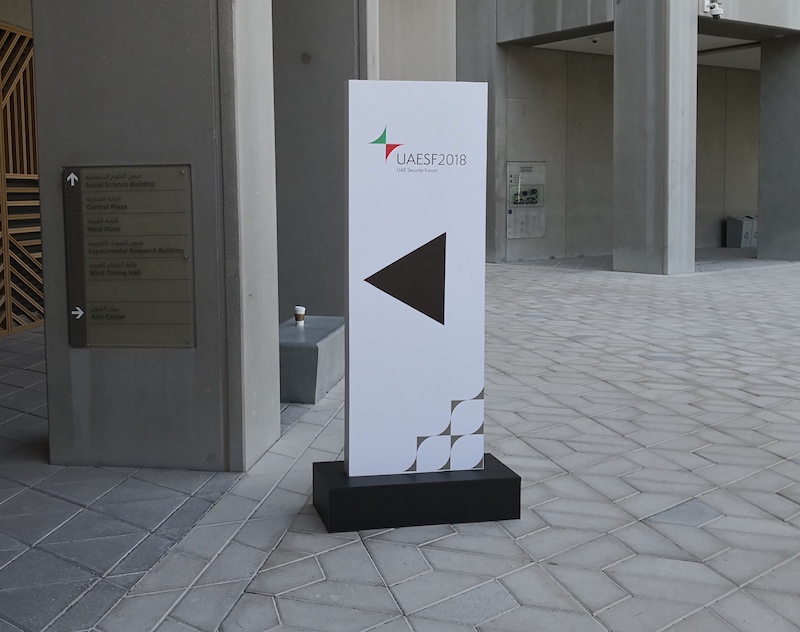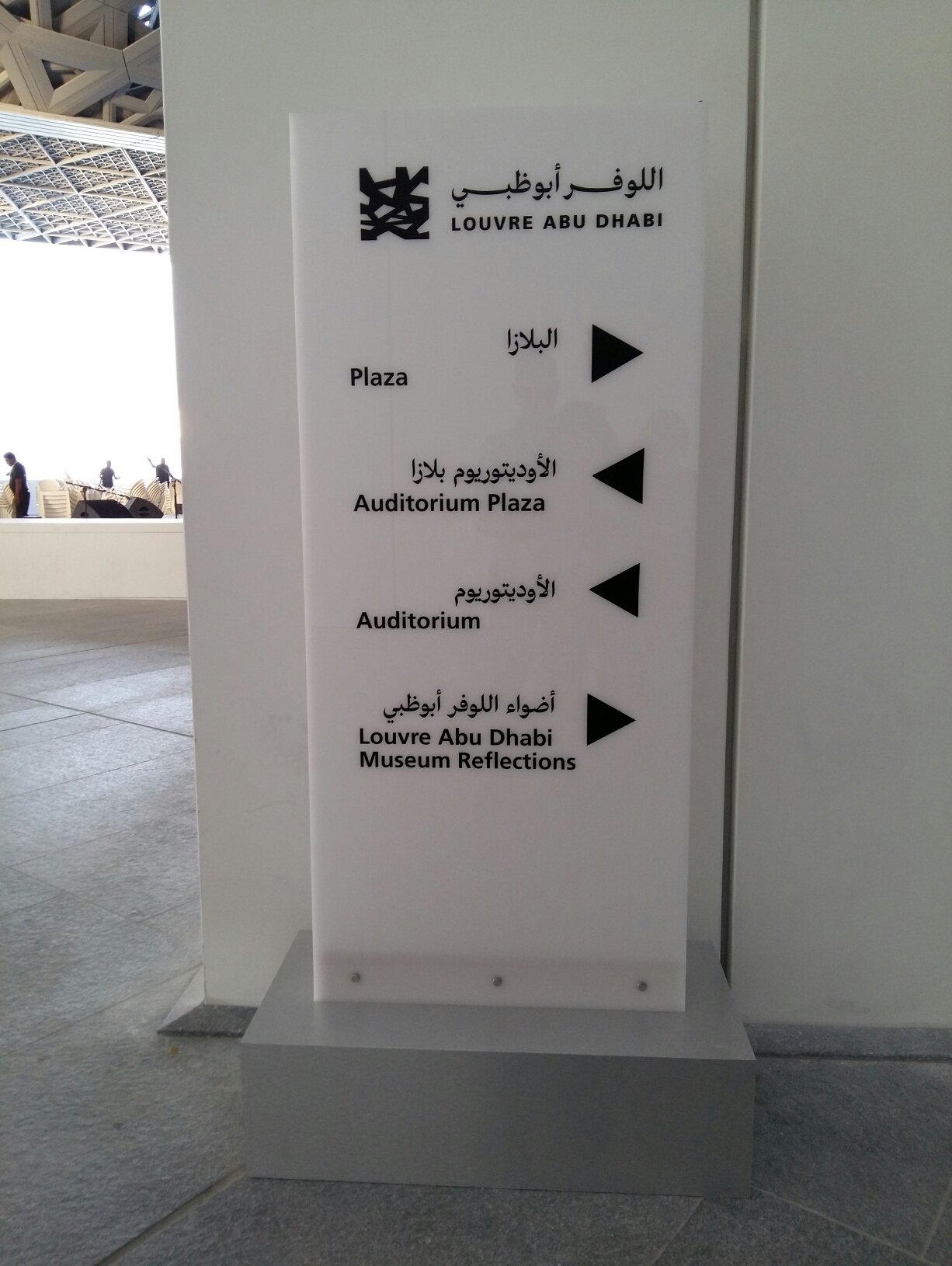

Equilateral triangles are very nice shapes, very appealing to graphic designers as they can be combined to make patterns in many ways. One area in which they should not be used is in Wayfinding, especially when they are used as arrows to indicate direction. The ambiguity of the information is apparent in the photo below, taken at the brand new Louvre Museum of Abu Dhabi. The plaza is on the right or upper left? The Auditorium is on the upper right, lower right or on the left? A quick photoshop to squeeze the triangles and the ambiguity is gone. Palmer, S. E., 1983. The Psychology of Perceptual Organisation: A Transformational Approach. In J. Beck, B. Hope and A. Rosenfeld (eds.), Human and Machine Vision. Academic Press, pp.298.
(Update: The sign is gone one week after we tweeted about it, 2018)
Attesting one more time the importance of raising this conversation in public space, it is remarkable that after few days after I took the photo and posted it on Twitter, the sign had been removed and corrected. Designer Erik Spiekermann was fast in offering criticism not only on the usage of equilateral triangles as arrows but also on how they were positioned in relation to the text.